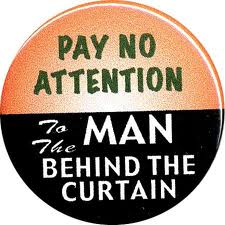Are hearing aid markups as high as internet operators and others claim? Are Audiologists routinely using a “5x markup?” So ended the last post in this series and so begins today’s post.
How High Did You Say?
Based on the 89,400 results accrued from a simple Google search of “$6000 hearing aids,” it seems reasonable to use the decade-old anchor price of $6000 for a set of instruments as the worldwide retail benchmark.
Anchor price is not Price, but it is what comes to people’s minds, true or not. In reality, prices vary widely depending on device, provider, location and competition. Anchoring is important because it reflects an almost unavoidable cognitive bias{{1}}[[1]]The link is to Wikipedia, which gives an easy summary of this and other psychological biases. Those who wish to learn more can pursue the references provided in the Wiki.[[1]] to make decisions around the anchor price, whether it’s real or not.
A quick look at Figure 1 disproves the anchor price for hearing aids in general. The retail data are not new or particularly hard to find. They were published years ago in Hearing Review, Hearing Journal and made available to participants of the Phonak Survey Report. Hearing Economics gathered the data from these sources and put them together along with references in two posts last year. On average in the US since 2004, retail prices for a binaural set of hearing aids ran between $3400-$4200. I say “disproves,” but this is actually part and parcel of the anchor bias: if a consumer has $6K as his/her anchor price, then $4200 seems like a bargain. Plus, premium pricing approaches the anchor price, as will be shown in next week’s post.
Internet operators know about anchor bias, which is why they set the $6000/pair anchor as a deliberate starting point and then “negotiate” price downward by offering those $399/ear offers. That’s the extreme, but what about Audiologists who sell and fit hearing aids? Do they benefit from the anchor price bias as well?
Retail Hearing Aid Pricing by Dispensers and Audiologists
We know from a previous post that premium wholesale and average retail Price tracked inflation (2004$) closely, as reflected in the parallel functions of Figure 1{{2}}[[2]]In real life, this means that a rational consumer considering his “basket of goods” would not view hearing aid price changes any differently than changes in his cost of eggs or cost changes of other things in his basket.[[2]] Figure 1 further shows an average retail price increase of $45/year over the last decade. That’s a bit less than the $51/year increase in wholesale prices of premium products shown in the Figure, and about double the $24/year increase in average wholesale pricing.
For the sake of argument, I will make the broad assumption that licensed retailers attend carefully to their Cost of Goods and therefore face the wholesale costs shown in Figure 1. To the extent that that assumption holds, then product and service markup ranged{{3}}[[3]]The percentage retail markup is calculated as 100* (Retail – Wholesale)/Wholesale.[[3]] from $1300-1500/aid. That’s a “markup’ of 2.5 to 2.9 — substantial, certainly, but costs of doing business are not accounted and it’s still far below the 5x markup claimed by Internet sellers. Gross profit margins stayed steady at 70%-75%.{{4}}[[4]]Formula for % gross profit margin is: 100* (Retail – Wholesale)/Retail.[[4]]
Hearing Aid Pricing: Fables
Figure 1 provides enough data to start myth busting and set the stage for solid pricing discussions. Here’s a start:
- Hearing aids act like other consumables in the fabled economic basket of goods. Their pricing at the wholesale and retail levels reflect inflation. Only that and nothing more.
- The anchor price of $6000/pair is a fable when it comes to an “average” hearing purchase, which means that the majority of consumers experience varying degrees of bargain perception when they purchase instruments, especially if the Audiologist/dispenser “sets” the anchor early when discussing price.
- Licensed retailers realize the same percent gross profit margin year after year. It falls well below the fabled 5x markup claimed by Internet competitors.
Now What?
What Figure 1 does NOT provide is average retail price of premium instruments, which is crucial to the discussion because that’s where most of the wholesale increase is occurring. The big questions are: How much of the higher cost of premium goods is being passed on to consumers and to which consumers? Next week’s post goes there.
(editor’s note: this is Part 8 in the multi-year Hearing Aid Pricing series. Click here for Part 7 or Part 9)








Holly:
Great information. Already added to my Practice Management classes. We’ve heard for years comments about pricing and that “if we only could reduce the price of products, market penetration would grow.” Yet, looking at Europe and Australia, that hasn’t been the case. Even when products are a given away, penetration rarely exceed 35-38%. We, now have a real-life example in the U.S. Costco has brought down the retail cost, yet, the market has not really grown (3.5-4%). We have seen a shift in where consumers are shopping but it’s not necessarily an increase in buyers. Once again, it appears that it’s not about price. It’s time for audiologists to differentiate themselves in their market as providers of the full scope of clinical practice and stop making the product the center of their universe.
BAF